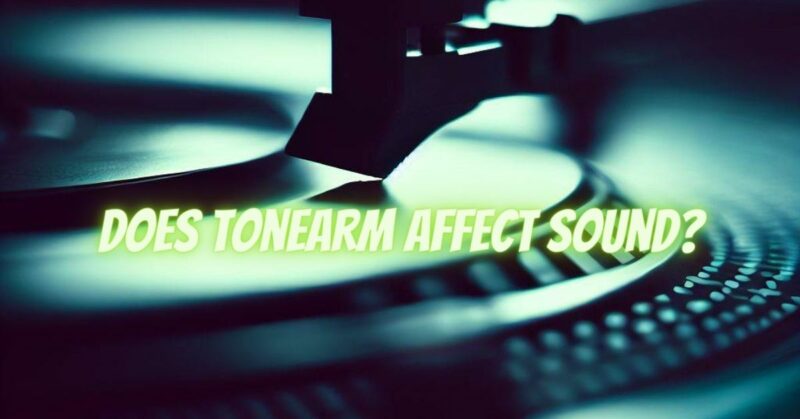The tonearm is a crucial component in any turntable setup, serving as the interface between the record and the cartridge. It plays a pivotal role in the overall sound reproduction, affecting various aspects of sound quality. In this article, we will explore the significance of the tonearm and its impact on the sonic characteristics of a turntable, shedding light on the question: “Does the tonearm affect sound?”
The Role of the Tonearm: The tonearm is responsible for several critical functions during vinyl playback. It holds the cartridge and stylus, maintains the correct tracking force, and ensures accurate tracking of the record groove. These factors collectively influence the quality of the sound produced.
Vibration Control: One key aspect where the tonearm significantly impacts sound quality is in its ability to control and minimize unwanted vibrations. Vibrations can be caused by various sources, including external factors and internal resonances within the turntable system. A well-designed tonearm will incorporate features such as effective damping mechanisms, rigid construction, and isolation from external disturbances, which help reduce vibrations and enhance sound clarity.
Tracking Accuracy and Channel Separation: The geometry and design of the tonearm have a direct impact on tracking accuracy and channel separation. A properly aligned tonearm with the correct pivot-to-spindle distance, effective offset angle, and overhang ensures optimal tracking of the record groove. This, in turn, translates to accurate reproduction of the music and improved channel separation, where the left and right audio channels remain distinct and well-defined.
Effective Cartridge Compliance: The compliance of the cartridge, which refers to its ability to follow the groove contours, interacts with the tonearm’s effective mass and resonant frequency. The right combination of cartridge compliance and tonearm characteristics ensures proper energy transfer and vibration control, resulting in faithful reproduction of the recorded music.
Upgradability and Customization: Another aspect where the tonearm affects sound quality is its potential for upgradability and customization. Higher-end turntables often allow users to swap out the stock tonearm for one of their choice, offering an opportunity to fine-tune the sound reproduction to their preferences. This flexibility allows audiophiles to explore different tonearm materials, lengths, and designs to achieve the desired sonic signature.
Conclusion: In conclusion, the tonearm indeed has a significant impact on the sound quality produced by a turntable. Its role in vibration control, tracking accuracy, channel separation, and cartridge compliance cannot be overlooked. A well-engineered tonearm with effective damping, precision geometry, and appropriate mass characteristics contributes to a more faithful and engaging playback experience. Understanding the importance of the tonearm in achieving superior sound reproduction allows turntable enthusiasts to make informed decisions when selecting, upgrading, or customizing their setups.


